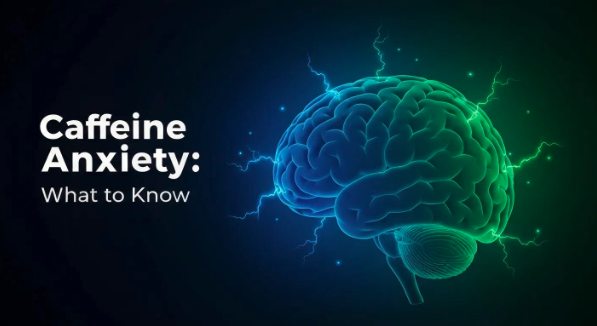More than Just Severe PMS Unveiled
Discover premenstrual dysphoric disorder (PMDD): more than severe PMS, it's a complex mood disorder to understand.

Understanding PMDD
Definition and Impact
Premenstrual Dysphoric Disorder (PMDD) is a severe form of premenstrual syndrome (PMS) characterized by significant emotional and physical symptoms. The disorder typically manifests in the late luteal phase of the menstrual cycle and can severely impact daily functioning and quality of life. It is sometimes referred to as late luteal dysphoric disorder (LLDD) due to its association with the late luteal phase of the menstrual cycle. Individuals with PMDD experience heightened sensitivity to hormonal fluctuations, leading to pronounced mood, behavioral, and physical symptoms.
While PMDD affects up to 5% of women of childbearing age (Women's Health), the disorder often leads to distress and impairment in personal, social, and professional areas. Symptoms can compel individuals to seek professional treatment, making recognition and understanding of PMDD critical.

Prevalence and Diagnosis
In the United States, approximately 70 to 90% of women in their reproductive years report some level of premenstrual discomfort. Among these, about one-third may have symptoms severe enough to meet the diagnostic criteria for PMS. The most extreme version of PMS, PMDD, is reported in about 3 to 8% of those diagnosed with PMS.
Diagnosing PMDD involves a thorough assessment of symptoms, typically utilizing standardized tools like the Carolina Premenstrual Assessment Scoring System and the Premenstrual Syndrome Screening Tool. These assessments help identify the severity of symptoms and their impact on the person’s life. Accurate diagnosis ensures that individuals receive appropriate treatment options to manage their condition effectively.
Percentage of Women Reporting SymptomsIncidence of PMDD Among PMS Cases70 - 90%3 - 8%Affected Women of Childbearing AgeUp to 5%
Understanding PMDD is essential for addressing the challenges it poses. For further insights related to mood disorders, visit our article on understanding mood disorders: an overview.
Symptoms of PMDD
The symptoms of premenstrual dysphoric disorder (PMDD) can significantly affect a person's quality of life and well-being. PMDD is characterized by a range of mood-related and physical symptoms that typically emerge during the luteal phase of the menstrual cycle, generally starting the week before menstruation and subsiding a few days after the onset of menstruation.
Mood-Related Symptoms
PMDD primarily manifests through emotional disturbances. Common mood-related symptoms include:
SymptomDescriptionDepressed MoodPersistent feelings of sadness or hopelessness.Increased AnxietyHeightened feelings of restlessness or tension.Mood SwingsSudden changes in emotional state, often between highs and lows.Self-Critical ThoughtsHarsh judgment toward oneself, leading to feelings of inadequacy.IrritabilityIncreased sensitivity and agitation, particularly in social interactions.Decreased InterestLoss of enthusiasm for activities that were previously enjoyed.
According to Johns Hopkins Medicine, these mood disturbances often peak two days before menstruation, leading to conflict with others and difficulties in daily functioning. The impact on relationships and overall life satisfaction is notable, as women with PMDD frequently experience more significant detriments to their quality of life compared to those with mild or no symptoms.
Physical Symptoms
In addition to mood-related symptoms, PMDD also involves several physical manifestations that can exacerbate discomfort. Common physical symptoms include:
SymptomDescriptionBreast TendernessSensitivity or pain in the breast area.HeadachesTension or migraine-like headaches often occur.Weight GainTemporary weight gain due to water retention.Changes in AppetiteIncreased cravings or loss of appetite.Changes in Sleep PatternsInsomnia or hypersomnia (excessive sleeping).FatiguePersistent tiredness that impacts daily activities.
These physical symptoms can further contribute to the emotional toll of PMDD, as women may struggle with both physical discomfort and psychological distress [2]. Addressing these symptoms holistically is essential for effective management of PMDD. For those seeking more in-depth perspectives on mood disorders, including definitions and classifications, refer to our guide on understanding mood disorders: an overview.
Causes of PMDD
Understanding the causes of premenstrual dysphoric disorder (PMDD): more than severe PMS is essential for both diagnosis and treatment. The underlying factors contributing to PMDD can be complex, primarily involving hormonal changes and alterations in serotonin levels.
Hormonal Changes
The precise cause of PMDD is not definitively known, but significant hormonal fluctuations throughout the menstrual cycle are believed to play a substantial role. Research indicates that women with PMDD typically have normal patterns of reproductive hormone release. However, they exhibit heightened sensitivity to cyclical variations in hormone levels. This increased sensitivity can trigger mood, behavioral, and physical symptoms associated with PMDD.
Hormones such as estrogen and progesterone influence brain areas that regulate emotions and behavior. Changes in these hormones can lead to emotional disturbances, including irritability, depression, and anxiety. Factors such as genetic predisposition, stress, being overweight or obese, and a history of trauma may also contribute to these hormonal effects [3].
HormoneRole in PMDDEstrogenAffects mood and emotional regulation; sensitivity may exacerbate PMDD symptoms.ProgesteroneLevel changes correlate with anxiety and depressive symptoms in susceptible individuals.
Serotonin Levels
Alongside hormonal changes, variations in serotonin levels are thought to significant factors in the development of PMDD. Serotonin is a neurotransmitter that plays a critical role in mood regulation. Women with PMDD may experience serotonin deficiencies, which can lead to heightened emotional symptoms during the luteal phase of their menstrual cycles.
The abnormal reaction to normal hormonal changes can result in serotonin imbalances that affect mood, leading to depressive episodes and irritability. Understanding the relationship between hormonal changes and serotonin levels is vital for addressing the challenges posed by PMDD.
Ensuring a comprehensive approach to managing PMDD includes considering both hormonal and serotonin-related factors as integral to successfully treating this complex disorder. For a broader understanding of mood disorders, you may explore resources related to understanding mood disorders: an overview.
Managing PMDD
Managing premenstrual dysphoric disorder (PMDD) effectively involves a combination of lifestyle modifications and medication options. Both approaches aim to alleviate symptoms and improve overall quality of life for women experiencing this condition.
Lifestyle Modifications
Making certain lifestyle adjustments can significantly help in managing PMDD symptoms. Key modifications may include:
Lifestyle ModificationBenefitsDietary AdjustmentsSupports overall moodRegular ExerciseReduces anxietyStress ManagementMitigates mood fluctuationsVitamin SupplementsPotential symptom relief
Medication Options
For women who experience significant PMDD symptoms, medication may be necessary. There are several effective options available:
Medication TypeExamplesPurposeSSRIsSertraline, CitalopramAlleviate emotional symptomsHormonal TreatmentsBirth control pillsRegulate hormones
By combining lifestyle changes with appropriate medication, those affected by PMDD can enhance their daily living and experience a reduction in the severity of their symptoms. For more information on mood disorders, visit our article on understanding mood disorders: an overview.
Treatment Approaches
When it comes to managing premenstrual dysphoric disorder (PMDD): more than severe PMS, there are several treatment options available. Two of the most common approaches include the use of SSRIs and hormone therapies.
SSRIs for PMDD
Selective serotonin reuptake inhibitors (SSRIs) are a class of antidepressants effective for many women experiencing PMDD symptoms. Medications such as sertraline (Zoloft), citalopram (Celexa), escitalopram (Lexapro), and fluoxetine (Prozac) have been shown to alleviate mood-related symptoms of PMDD. The choice to take these medications daily or intermittently often depends on the specific symptoms experienced by the individual [3].
SSRI NameCommon UseTypical DosageSertraline (Zoloft)Daily or as needed50-200 mgCitalopram (Celexa)Daily20-40 mgEscitalopram (Lexapro)Daily10-20 mgFluoxetine (Prozac)Daily or as needed20-80 mg
Hormone Therapies
Hormone therapies can also be utilized in the management of PMDD symptoms. Oral contraceptives, commonly known as "the pill," may help regulate or even suspend menstrual cycles, potentially easing PMDD symptoms. However, the effectiveness of hormonal birth control as a treatment for PMDD varies, with some individuals reporting improvement in their symptoms while others may experience worsening conditions.
In more severe cases, gonadotropin releasing hormone (GnRH) analogues may be recommended to induce a temporary menopause, which can significantly alleviate symptoms. However, this treatment is generally considered only after other options have been exhausted, due to potential side effects like loss of bone density, which increases the risk of osteoporosis [5].
For individuals who do not find relief through these methods, a total hysterectomy with bilateral salpingo-oophorectomy, which removes the uterus, ovaries, and fallopian tubes, might be considered as a last resort to eliminate PMDD symptoms permanently. This surgical option is irreversible and carries risks, which should be thoroughly discussed with a healthcare professional before making a decision [5].
By understanding these treatment approaches, individuals with PMDD can make informed decisions alongside healthcare providers about managing their condition effectively. For deeper insights on mood disorders, check out our articles like understanding mood disorders: an overview and psychotherapy approaches for mood disorders.
Risk Factors and Long-Term Effects
Genetic Vulnerability
Genetic factors play a role in the development of premenstrual dysphoric disorder (PMDD). Certain individuals may have a genetic predisposition that makes them more susceptible to the emotional and physical symptoms associated with this condition. Research indicates that brain areas responsible for regulating emotion and behavior contain receptors for estrogen, progesterone, and other sex hormones, which may influence PMDD symptoms [3].
Other notable risk factors contributing to PMDD include stress, being overweight or obese, and a history of trauma or sexual abuse. Women with a family history of mood disorders may also be at a higher risk of developing PMDD. Understanding these genetic and environmental factors can help provide insight into the risk of PMDD and guide effective management strategies.
Functional Impairment
PMDD has a significant impact on daily functioning. Women with PMDD experience an average of 6.4 days of severe symptoms per menstrual cycle, which translates to approximately 8 years of debilitating symptoms over a lifetime [1]. The severity of symptoms can impair an individual’s ability to function at home, work, and in social relationships, distinguishing PMDD from other mood disorders or menstrual conditions.
Due to the profound effects of PMDD, many women find it challenging to maintain regular routines, fulfill responsibilities, or engage in activities they once enjoyed. This functional impairment underscores the importance of recognizing PMDD as a serious mental health condition and the need for appropriate diagnosis and treatment.
Here is a summary table depicting the relationship between genetic vulnerability and functional impairment in PMDD:
Risk FactorDescriptionGenetic VulnerabilityIncreased likelihood due to family history and geneticsFunctional ImpairmentSevere symptoms impacting daily life and responsibilities
Recognizing these factors can aid in understanding the broader implications of PMDD and highlight the importance of seeking help for effective management. For further insight into mood disorders, consider exploring resources such as understanding mood disorders: an overview and the spectrum of mood disorders explained.
References
[2]:
[3]:
[4]:
[5]:
More Resources
A team ready to start your journey.
Get in touch — today.
We are a safe space – a haven for exceptional individuals to receive discreet, personalized, in-person treatment and care.
.avif)



.webp)






